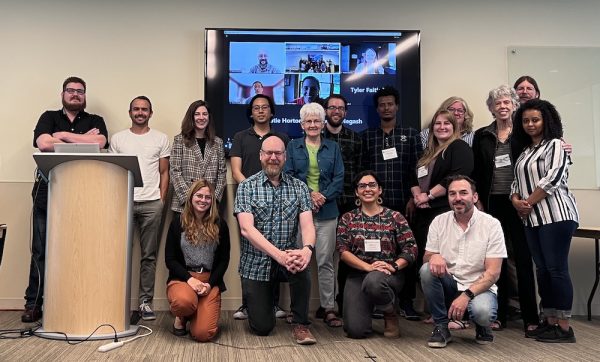CSU Anthropologists Host Paleoecology Summit
June 24, 2022
Joshua Zaffos
Researchers who study the evolution and adaptations of Homo sapiens and other hominin species across hundreds of thousands to millions of years face a constant challenge: reconstructing long-long-long-ago paleoenvironments. Not surprisingly, ancient fossil records are incomplete and imperfect, and while some species may preserve well, many others typically leave behind no clues of their past existence.
“The fossil record generally gives paleoanthropologists a tiny window into what we call the spatiotemporal distribution of hominins and the environments they were associated with,” said Andrew Du, Colorado State University Assistant Professor of Anthropology. “This creates biases and gaps in our knowledge of past life.”

This May, Du and colleague Tyler Faith, Associate Professor of Anthropology at the University of Utah, convened a three-day, hybrid (in-person and online) Hominin Paleoecology Workshop at CSU to address those gaps, biases, and challenges. The meeting brought together nearly 30 paleoanthropologists, paleoecologists, paleobiologists, neoecologists, and statisticians to launch a more coordinated and insightful approach to reconstructing ancient ecologies and places where early humans and other hominins adapted and evolved.
“In the field of hominin paleoecology, we are typically reconstructing paleoenvironments using fossils and modern ecosystems as analogs,” Du said. “Then, we connect those environments with hominin evolutionary patterns – like the increase in brain size through time – through some narrative linking species and ecology together. These post hoc explanations are not really a strong form of scientific inference, so we want to develop more secure ways of connecting evolutionary and ecological pattern and process in paleoanthropology.”
Researchers from more than a dozen institutions across the country and abroad, including CSU Anthropology professors and graduate students, participated in the workshop in person and virtually. Workshop and breakout group sessions explored practices and theory surrounding data collection methods, modeling frameworks, the gaps and biases in paleoenvironmental and fossil records, and allowed the group to share research and network with peers.
Du hopes the meeting will improve collaboration and coordination among paleoanthropologists and researchers from other fields. At CSU, he recently established and opened the Center for Paleoanthropological Research to provide a space for professors, graduate students, and postdocs to work and collaborate on campus. He and Faith also plan to apply for National Science Foundation grants to support further workshops and coordination.
“The workshop was incredibly productive and intellectually stimulating,” Du said. “It was a lot of fun to brainstorm with great thinkers from fields — like statistics and neoecology — that paleoanthropology normally doesn’t interact with.”